Welcome, Commander players! This primer covers the basics of playing Orzhov in Commander, part of a ten-part series that covers all of Magic’s two-color pairs. In this series, we go through the strengths and weaknesses of each color pair, as well as common play styles. This primer is the tenth and final installment; the capstone of a three-year project. You can read our other primers here: Gruul, Azorius, Simic, Selesnya, Rakdos, Dimir, Boros, Izzet, and Golgari.
The Orzhov Syndicate is a guild of power and profit. It seeks to exploit individuals for the gain of the group. This flavor plays out in the gameplay of Orzhov decks. You might sacrifice creatures for a cause, siphon life from opponents, or repeatedly resurrect creatures to do your bidding.
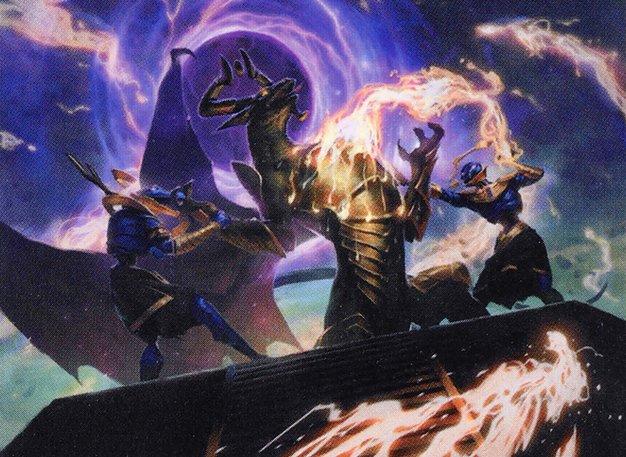
Despark by Slawomir Maniak
Strengths
Removal: If you want something gone, it helps to make friends with the Orzhov player at the table. Out of all ten color pairs, Orzhov is one of the most powerful when it comes to removal. White does more of the heavy lifting here, with a whole host of tools to choose from. It can come from classics like Swords to Plowshares or Path to Exile, or creature-based removal like Skyclave Apparition. You can also get removal from enchantments, such as Banishing Light, Darksteel Mutation, and Grasp of Fate. These are especially useful with decks that run Enlightened Tutor or Idyllic Tutor.
Black has historically been confined to removing creatures, but it has recently been branching out into other permanents. Feed the Swarm and Swift End on Murderous Rider are two such examples of how Black has grown in the past several years. Meanwhile, Infernal Grasp and Tragic Slip are cheap and effective, and potent tools in this current metagame. For creature-centric decks Ravenous Chupacabra can be flickered or reanimated to take care of threats.
As for multicolor options, there are many to choose from. Anguished Unmaking and Mortify are longstanding staples, which can hit a variety of targets. Fracture and Despark are relatively newer, but they’ve been largely replacing older favorites like Vindicate and Utter End.
Board Wipes: If you need the board clear of permanents, Orzhov has a deep offering of sweepers. Wrath of God and Damnation are longstanding classics, with Vanquish the Horde and Toxic Deluge as newer counterparts. When you get into the six-mana space, you see powerful modal sweepers like Farewell, Merciless Eviction, and Austere Command.
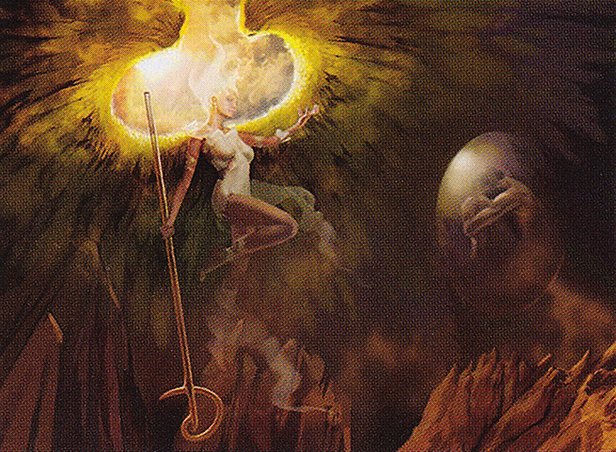
Karmic Guide by Allen Williams
Creature Combo: If you like assembling multiple creatures into powerful combos, then Orzhov is a great place to be. Black and White come together to get multiple uses out of their creatures. White brings mass flicker effects like Eerie Interlude and Semester’s End. These allow your creatures to escape a board wipe, or set up a game-breaking turn with multiple triggers going off at once. Black likes to use mass reanimation effects like Living Death, Rise of the Dark Realms, and Agadeem’s Awakening. With the right set of creatures on board, one of these haymaker cards can easily set up a game-winning combo.
You don’t need a large board state to win with Orzhov, though. If you have Blood Artist out and Leonin Relic-Warder in your graveyard, you can infinitely drain your opponents’ life by casting Animate Dead on the Leonin Relic-Warder. Or, you can get infinite colorless mana and treasure tokens when you send Reassembling Skeleton through Ashnod’s Altar, with the help of Pitiless Plunderer and Teysa Karlov.
The more pieces a combo has, the harder it is to assemble. However, both colors come equipped with tools to find them. It’s easy to look at Black and think of Demonic Tutor or Vampiric Tutor, but there are other options out there. For instance, you can flicker creatures like Rune-Scarred Demon, Recruiter of the Guard, or Ranger of Eos. These cards in Orzhov’s wheelhouse help you find the pieces you want, when you want.
Recursion: When it comes to getting things back from the graveyard, Orzhov decks have no shortage of tools. Black can either get reanimate creatures back to the battlefield, or bring them back to hand with cards like Phyrexian Reclamation. Meanwhile, White has the likes of Sun Titan and Sevinne’s Reclamation, grabbing permanents based on their mana value.
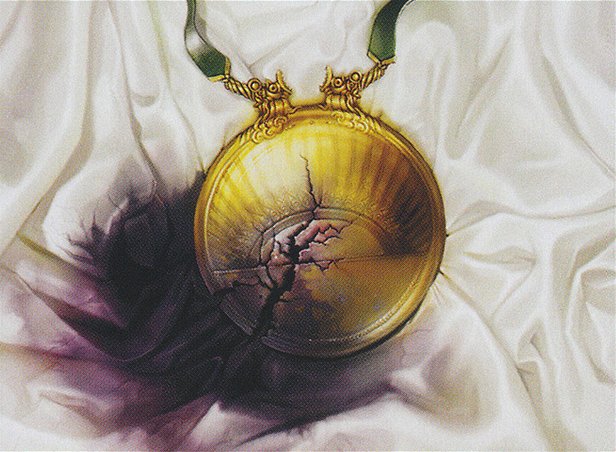
Tainted Sigil by Chippy
Life Total Manipulation: There’s an old adage that the only life point that matters is the last one. For Orzhov players, lifegain strategies can be used to their highest potential. White cards can gain life easily, while Black cards are strong at using life for an advantage. Playing the colors together eliminates the shortcomings that both have when used separately.
An Orzhov player can stock their deck with tools like Necropotence, Debt to the Deathless, Torment of Hailfire, and Cruel Celebrant. These cards can be exploited with a lifegain commander like Karlov of the Ghost Council.
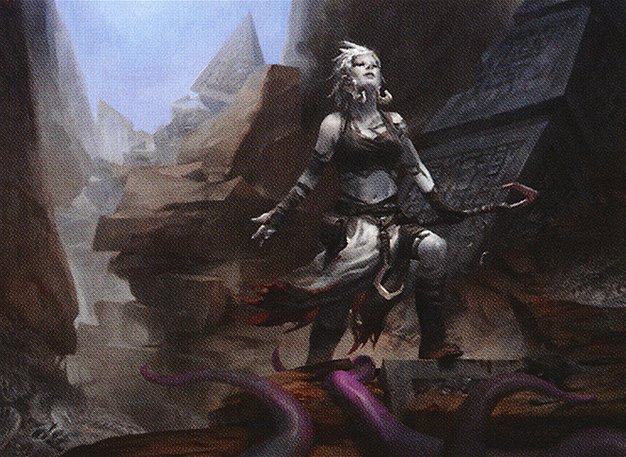
Ayli, Eternal Pilgrim by Cynthia Sheppard
Weaknesses
Diversity of Choices: Think of the last Orzhov deck you saw at Commander night. Was it an Aristocrats deck that used a lot of little creatures to get ahead? Was based around lifegain effects?
A challenge with playing Orzhov is that it frequently gets funneled into one of a few archetypes. Aristocrats and lifegain reign supreme, with a steep drop off after that. This results in a narrow pool of Commander choices, since many Orzhov legends fit into one of those two categories. If you’re on an Aristocrats deck, there are few reasons to run Ayli, Eternal Pilgrim or Teysa, Orzhov Scion, when you can choose Teysa Karlov or Athreos, God of Passage.
Inconsistent Closing Speed: When it comes to the pace of winning a game, Orzhov decks can fluctuate wildly. Wins come quickly, like through a well-assembled combo involving staples like Blood Artist and Karmic Guide. Or, they could be a death of a thousand paper cuts, as you slowly drain opponents with Kambal, Consul of Allocation or extortion triggers through Crypt Ghast.
While both of these scenarios can produce the same outcome, is it likely to be enjoyed by the table? How about the person piloting the Orzhov deck? Some Commander players dislike when combo wins come out of seemingly nowhere, but there’s also a general dislike for games that drag out. This puts Orzhov in a difficult spot.
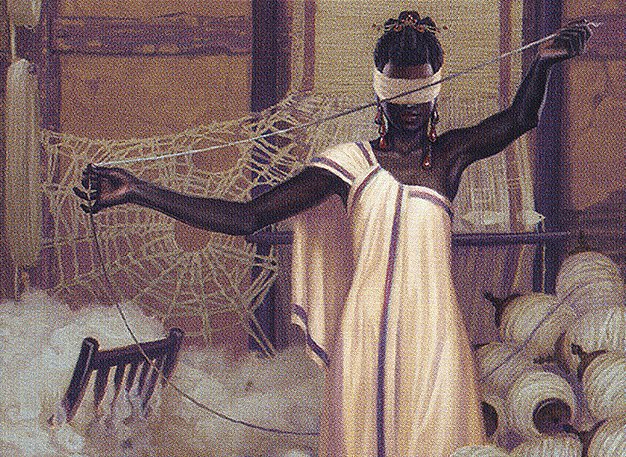
Tymna the Weaver by Winona Nelson
Common Commanders and Archetypes
Lifegain: Playing a lifegain deck in Commander can feel a lot like running towards a cliff and seeing how close you get without falling off. Of course, you’re not just gaining life, but using it as a weapon too. Your life total is being fed into things like Aetherflux Reservoir or Plunge into Darkness, causing your opponents to ride the highs and lows with you.
This is one of Orzhov’s signature strategies in Commander. Liesa, Shroud of Dusk, Karlov of the Ghost Council, and Kambal, Consul of Allocation are three of the stalwart options to choose from. Elas il-Kor, Sadistic Pilgrim is a relative newcomer, which is a blend of Blood Artist and Soul Warden.
Aristocrats: Life and death, working together for a common goal. These decks involve using and reusing small creatures that create value when they enter the battlefield or die. The very term “Aristocrats” came from a Mardu Sacrifice deck with Cartel Aristocrat and Falkenrath Aristocrat, back in Innistrad-Return to Ravnica Standard.
Like their ancestors, these decks assemble a critical mass of small creatures. They win by delivering haymaker blows through cards like Zulaport Cutthroat or Living Death. Common commanders are Teysa Karlov, Athreos, God of Passage, and Elenda, the Dusk Rose.
Party: This is the newest angle for Orzhov, and an exciting one for players to uncover. With the release of Commander Legends: Battle for Baldur’s Gate, Nalia de’Arnise launched a brand new Orzhov archetype. This plays into the concept of jobs in Magic creature types, first heavily supported in Lorwyn block. All of a sudden, a pile of seemingly unrelated cards can be turned into a deck, if they match one of the relevant jobs in the party. This allows you to dive deep into your bulk, pulling out zombie and human wizards, Kor and cat clerics, vampire and dwarf rogues, and anything else that rounds out the party. Since this is a fairly new archetype on the scene, there’s plenty of new things to uncover for Party decks.
Nalia de’Arnise is the top choice for this strategy, but Burakos, Party Leader with Folk Hero is also a consideration. The party mechanic might not come back in the near future, but there’s plenty that can be done with it still.
Tokens: Selesnya legendaries are often chosen to lead token decks, but Orzhov brings it’s own take on the archetype. Instead of amassing tokens to attack with Beastmaster Ascension, these decks use their tokens as fodder for a Bastion of Remembrance or Skullclamp. This makes them similar to conventional aristocrat decks, but with one key difference. Token decks don’t care about what they sacrifice, but rather how much.
A token deck doesn’t rely as much on reusing Ravenous Chupacabra, but rather how many creature tokens it can feed through Cartel Aristocrat. While Green has tools like Doubling Season and Parallel Lives, Orzhov decks have been getting new tools to make tokens quickly. Inkshield and Blot Out the Sky are two such examples, allowing you to turn a game on its head.
Top commanders for token decks include Thalisse, Reverent Medium, Shadrix Silverquill, and, you guessed it, Teysa Karlov.
Tribal and Other Oddities: While Orzhov is heavily centered around its main themes, there are a few other ways you could play the color pair. Most of these new directions have come out in the past few years, thanks to an increase in attention on the format from Wizards of the Coast. These options include Orah, Skyclave Hierophant (Clerics), Greasefang, Okiba Boss (Vehicle Reanimator), Killian, Ink Duelist (Auras). This is an encouraging step for Orzhov in Commander, considering it has been typecast so many times before.
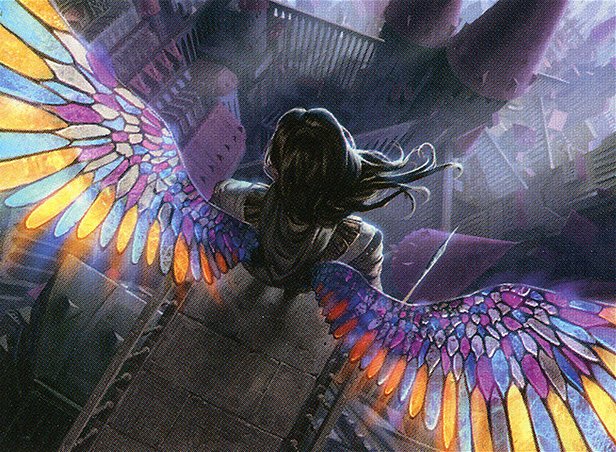
Gift of Orzhova by Johannes Vos
Final Take
Orzhov is life and death, darkness and light, the black and white cookie from Zaro’s Bakery in Grand Central. Orzhov blends two polar opposites into one unified front, where they realize they have more in common than they originally thought. This nature comes out in gameplay, as you balance the two sides to reach for your goals.
While it isn’t listed as a weakness, I believe that Orzhov lacks an “It” factor in Commander. Orzhov is decidedly middle of the pack in a lot of categories, like ramp and card draw. Unless you build around explosive Black mana doublers, like Narkana Revenant or Cabal Coffers, then you’re left playing a slower, more incremental game. In a format filled with explosive turns and splashy plays, Orzhov can get outshined at times.
If you’re not interested in the main archetypes, then it can be hard to get excited about playing an Orzhov deck. It’s not the most boring thing you could be doing, but it also gets passed up a lot for other color pairs, like Simic, Golgari, or Izzet. Orzhov has a lot of history in 1v1 formats, with legends like Lurrus of the Dream-Den or Obzedat, Ghost Council, but those kinds of designs don’t make the same splash in a multiplayer format. The color pair could benefit from more legends like Greasefang, allowing it to stand out more from the others.
Orzhov has challenges right now, but it also has plenty of room to grow. The balance will return again.
Travis Norman (he/him) is a writer and photographer from the wooded foothills of New York, currently living in South Carolina. He plays nearly every Magic format, but has a special love for Legacy, Premodern, and Canadian Highlander. He has loved Magic since Starter 1999, but he champions having a healthy mental and financial relationship with the game. When not playing games, he enjoys cycling, tea, and dog parks. You can follow his exploits here on Twitter and Instagram.

